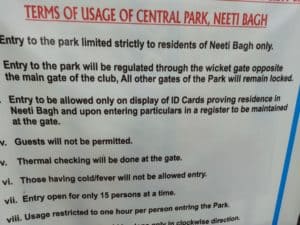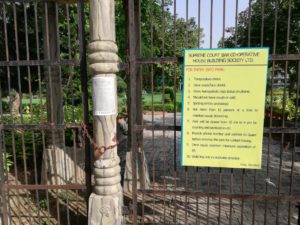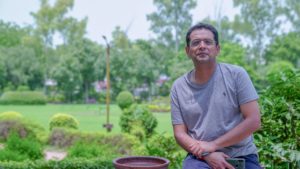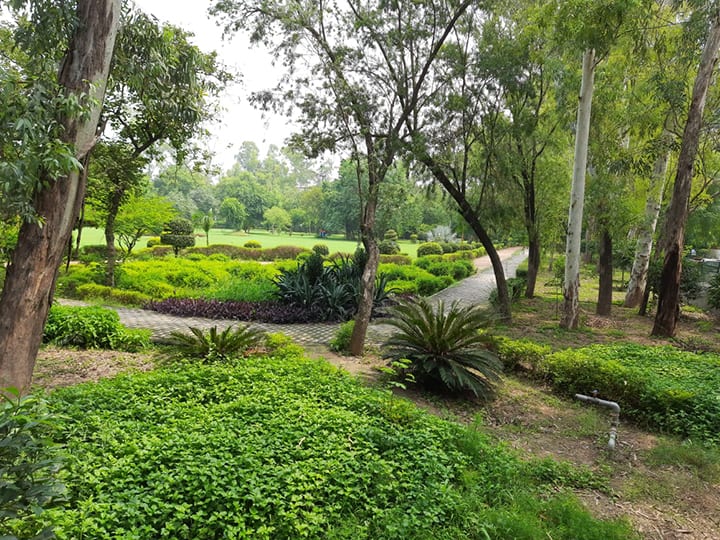The rich are using the pandemic as an excuse to usurp public spaces away from poor
In recent times, the beautification drive in the capital has often translated into driving the homeless away from the streets. It’s not just the civic agencies and the government that find poor people an eyesore, but also the residents’ welfare associations (RWAs) of the rich neighbourhoods.
The case in point is that of South Delhi’s Neeti Bagh, which has restricted the entry of the
non-residents to a public park owned by the Municipal Corporation of Delhi (MCD), in the name of preventing the spread of the pandemic.
This is part of the larger phenomenon of gentrification experienced all over the world. Delhi is no exception. The term gentrification was coined by sociologist Ruth Glass in 1964, which points to the silent, yet the fairly evident phenomenon of the city becoming more advanced and gaining a metropolitan character, invariably leads to middle-class jobs becoming more specialised and the poor pauperised pushed to the peripheries. The affluent began invading once-modest neighbourhoods, eventually, changing the character of communities adjusted to meet the demands of the new populace.

Neeti Bagh, the colony of senior lawyers—Abhishek Manu Singhvi, Soli Sorabjee to list a couple—is a good example. There are two bodies that manage the affairs of the locality, the RWA and the Supreme Court Bar Cooperative House Building Society Limited (SCBCHS)—also referred to in common parlance as ‘association’ by the residents. The association had reached an agreement with the MCD to maintain the ‘central park’—and had done a good job. But, it still remains public property.
The association came up with highly restrictive ‘terms of usage of the central park’ like entry limited only to residents on the display of identity cards or, for that matter, disallowing guests. In other words, a resident/owner of a house in Neeti Bagh is not allowed to go for a walk with his visiting brother or a friend to the central park.
Further, children below 12 years of age are not allowed in the park; also “persons above 65 years of age enter the park at their own risk.” So is the association hinting that people between the ages of 12 to 65 years enter the park at association’s risk?
Arjun Bhagat, a filmmaker and journalist, did not take this lying down. “The residents of Neeti Bagh have themselves informed me that no lease has been given to the Neeti Bagh society or RWA (by MCD) and that the MCD pays the water and electricity bills. Further, I have been informed by MCD that Neeti Bagh, or for that matter any MCD or government park, even if maintained by the society, has no jurisdiction to impose any unilateral and self-serving rules that discriminate on the basis of residence,” clarifies Arjun. A point of view that’s held by many progressive residents.
Bhagat wrote to the authorities—including the local deputy commissioner of MCD and the MLA, informing of what he described as “the blatant discrimination and usurpation of public property and restriction imposed in the name of Covid-19” by the SCBCHS.

Jairam Bharal, 64, has been living in Masjid Moth village since his birth. He also heads the DDA market association in Neeti Bagh and has approached the courts many times against the actions of the association.
“This colony is built on our land. At the time of the land acquisition, it was provided that the residents of the village will be given priorities in the use of the public property. Park is public property, and maintaining it doesn’t give the association the ownership,” he says.
Bharal also describes how Gautam Nagar, a neighbouring Lal Dora village, which was part of the Masjid Moth Village has become very densely populated, with no open spaces, and a family is cramped in dwellings of 25 square yards. They have to go to public parks to get some fresh air or soak up the sun. “They cannot be denied some fresh air. It’s a question of their health. Life of a poor person is also precious,” he says in Hindi.
However, he says that the court is not very supportive of their stand, because, perhaps, Neeti Bagh is a colony of influential lawyers. “At the least, they don’t have to pay the lawyer’s fee,” he quips.
The secretary of the SCBCHS, Ajit Pudussery, a lawyer of certain repute, initially, didn’t want to go on record, as he claimed he was not authorised to make a statement. However, later, he agreed to be quoted as saying, “The only consideration is to prevent the spread of Covid. We don’t know how it spreads, whether airborne or by contact. We never prevented the large crowd from gathering in the past. We want to take all precautions as many residents living here are senior citizens.”

However, Arjun is not hesitant to put his side of the story on record: “Mr Ajit Puduserry called me and I thank him for that. He said that they will not be allowing anyone but residents as the society owns the central park, having taken it on lease from MCD. And that only society can take a decision to allow people. I asked if the lease/agreement with the MCD/Delhi Government stipulated that only residents of Neeti Bagh could use the park. Mr Puduserry was honest enough to say ‘no such provision exists’ and, therefore, he couldn’t furnish a document to that effect but ‘it’s implied’ as the society runs the park, they can stop anyone. What can one really do against entitlements and sheer force?” Arjun asks a rhetorical question.
However, soon after Arjun raised his voice, alerted the authorities, the boards put up stating in bold the ‘terms of usage of the central park’ were removed and replaced with a new less restrictive one (see picture).
Neeti Bagh is not an exception but part of a growing trend where the city is becoming increasingly unwelcoming to people belonging to economically weaker sections of the society.
There are more such examples. When the lockdown started, thousands of the working class people were forced to come out on the street and walk hundreds of miles to their villages. To them, Covid-19 was not the real threat to their life, starvation was.
Those who could afford to stay back, are now being prevented from using public places. The rich want to be safe, and the poor are a threat. This is the worst implication of a gentrified city.
(Cover: Central park, Neeti Bagh)





